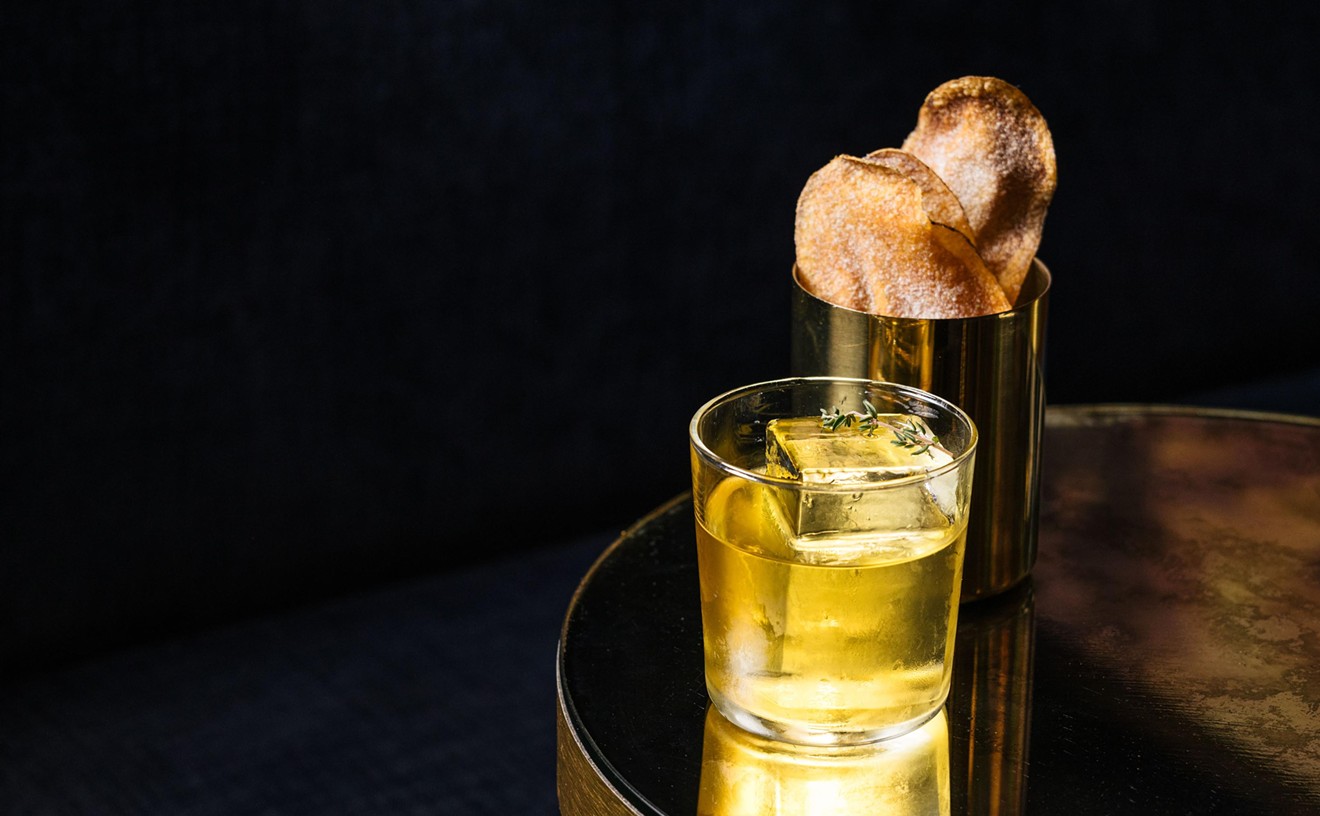School's in session, on your terms: We're asking the Valley's top wine gurus to answer all your wine-related queries, tackling them one at a time each Wednesday, so we can all stress less and pour more. Today's teacher: Brian Bergeron, Certified Sommelier, Certified Specialist of Wine and Southern Wine & Spirits AZ Key Account Manager. UNCORK THE ISSUE: We all know them: The White Zin ladies. Your college friend who dressed up as Franzia for Halloween wearing a box and carrying a space bag to pour the sickly sweet pink concoction out a spigot all night long. The Sutter Home sect. The Arbor Mist crowd.
But for serious wine drinkers (and novices diving into the wine world alike), is pink wine drinkable?
SPILL THE JUICE: "Of course!" says Brian Bergeron, a certified sommelier, certified specialist of wine and a key account manager for Southern Wine & Spirits AZ. "If it's not from Sutter Home, Beringer or anything like that and it's on a good wine list or in a good wine shop, a rosé or blush wine is definitely worth trying. You'll likely be surprised."
NOTE THE COMPLEXITIES: Bergeron is on a self-declared mission to bring rosés to the Phoenix area, which he claims is the perfect climate and food culture for the wine, which is best enjoyed cold, about 45-50˚F with grilling food (read burgers, spicy food, perfect for the Mexican) or poolside on its own.
"The two greatest American markets for rosé are Seattle and Portland, which have some of the most marginal climates in the country but are also the most well-read," Bergeron says, highlighting that consumers in these two notoriously rainy cities drink more rosé in one summer than Phoenicians drink year-round in our ever-sunny city.
(Click through for why drinking pink wine won't cost you your wine cred... and may even up your wino points.)
"We won't see a lot of these beautiful wines unless we start supporting them," Bergeron says.
Rosé, also referred to as blush, wines are made from red grapes that are only allowed to macerate with their skins for a short period of time, which prevents them from both achieving their full color and the full tannic property usually associated with red wines and were made popular in an era when sweet whites were popular.
"White Zin saved all the old Zinfandel vineyards in California," Bergeron says. "Sutter Home came up with a great success without ripping up the heritage vines."
The White Zin stigma spans the U.S. and extends to Europe: "The Brits swilled that shit for decades," Bergeron says of a once-popular French rose called Rose d'Anjou, but it's not all bad.
"It's a myth that all rosés are sweet," Bergeron says. "They range from super sweet to off-dry to dry. And there are some serious dry rosés out there that are lights-out incredible."
Hint: If you're looking for a dry rosé, look for the words DRY ROSÉ on the label, it's usually in large print. And a good rule of thumb is that a higher alcohol content, say 12 or 13 percent, will have less residual sugar, i.e. sweetness, than say one with 8 or 9 percent alcohol (cough, Sutter Home, cough).
- 1. Buy fresh. "Rosés are fragile and don't have a shelf life," Bergeron says. "I wouldn't buy anything dated earlier than a summer ago, meaning this year I wouldn't buy anything older than an '08." The 2010s will be in the market soon and are your best bet for fresh, quality wine, according to Bergeron.
- 2. Drink it fast. "Buy at the store, and drink it within a week," Bergeron advises. "If you like it, buy more." But...
- 3. "Don't get attached to the label," Bergeron advises, "You might not find it again." Pay attention to the region and grape varietals instead.
- 4. Look for rosés from Southern France or Washington. "Grenache is probably the greatest grape for the base of a rosé," says Bergeron, highlighting the main varietal in Southern French blush blends. "Washington wine producers will say that Sangiovese is the best for a summer rosé though, as it has more fruit and spices."
- 5. Steer clear of brown-ish tints. "Rosés range in color from salmon to cranberry," Bergeron says. Anything out of that realm could be going bad.
- 6. Brace yourself for a lack of vanilla. "Matt Kramer says that vanilla is like catnip for humans," Bergeron says. "Rosés have zero vanilla. They're bright and fruity and devoid of all vanilla. Just be ready for that."
- 7. Finally, "DON'T BE AFRAID TO ASK!" Bergeron says, recommending you enlist good help whenever it's available.
His best bets: AJ's on Lincoln in Scottsdale and AZ Wine, which are both just starting to get the 2010 rosés in.
SWALLOW THIS: "Unless we support these interesting rosés one bottle at a time, none of the distributors will take the risk to bring a larger array into the market," Bergeron says.
Bring a rosé to your next dinner party, already chilled and ready to go, he recommends, just to get people talking about it and trying new things.
"Open it up, pour everyone a glass and watch their faces get all mixed up," Bergeron says. "They can't believe they like it." Then you're fielding questions about where you picked it up and how much it was...
"Just remember to stay fresh, my friends," Bergeron says. Nothing, not even Franzia, can ruin rosé like an old rosé.
Come back for class next Wednesday and leave your questions for our wine gurus in the comments below, no hand-raising necessary.










